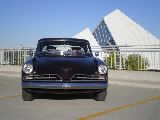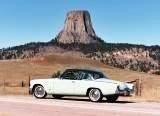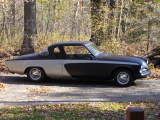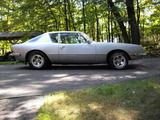I am to the point in my restoration where I need some ideas on the rebuilding the nose on a '54 Champion Starliner HT. It is extremely rusted and continued through the bondo put on 30 years ago.
Is it best to weld in new metal or fiberglas over the rust holes as I have it ground down to the metal?
Any help would be appreciated.
John T.
Is it best to weld in new metal or fiberglas over the rust holes as I have it ground down to the metal?
Any help would be appreciated.
John T.



 /i831.photobucket.com/albums/zz232/jmtipps/studes/stude%20restore/015.jpg[/IMG]
/i831.photobucket.com/albums/zz232/jmtipps/studes/stude%20restore/015.jpg[/IMG]

 ,
, 
Comment